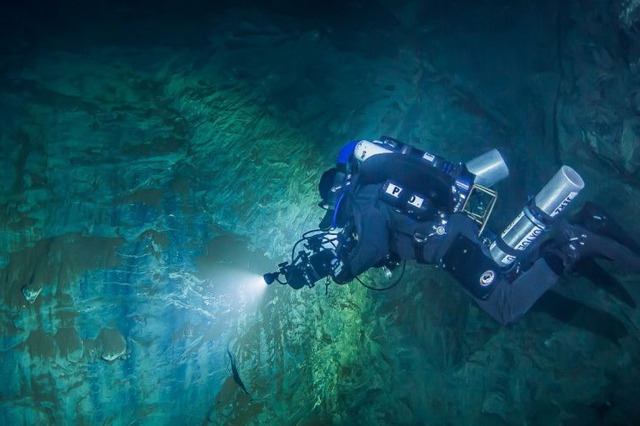Deepest underwater cave in the world discovered
WARSAW, Poland — A team of explorers say they’ve found the world’s deepest underwater cave, located at least 404 meters (1,325 feet) down a limestone formation in the eastern Czech Republic.
Polish explorer Krzysztof Starnawski, who led the team, told The Associated Press on Friday that he felt like a “Columbus of the 21th century” to have made the discovery near the Czech town of Hranice.
Starnawski, 48, determined Tuesday that the flooded limestone Hranicka Propast, or Hranice Abyss, which divers have explored for decades, was at least 404 meters deep. He scuba dived to a narrow slot in the formation at 200 meters down, then sent a remotely operated underwater robot, or ROV, that went to the depth of 404 meters, or the length of its cord, but still did not seem to hit the bottom.
In 2015, Starnawski himself passed through the slot and went to 265 meters down without reaching the cave’s bottom. After diving that far down, Starnawski had to spend over six hours in a decompression chamber.
Speaking on the phone from his home in Krakow, southern Poland, Starnawski said Tuesday’s discovery makes Hranice Abyss the world’s deepest known underwater cave, beating the previous record-holder, a flooded sinkhole in Italy called Pozzo del Merro, by 12 meters (39 feet).
The Czech Speleological Society said it thinks the cave is even deeper and will yield additional records. When the robot was 404 meters deep “it was as deep as its rope could go, but the bottom was still nowhere in sight,” the society said in a statement.
Diving in the cave is a challenge, because of its muddy areas and a water temperature of 15 degrees Celsius (59 degrees Fahrenheit). The water’s mineral composition also damages equipment and injures exposed skin, Starnawski said.
“But that is the only price to be paid for this discovery, and it was worth paying,” he said.
On Saturday, he plans to dive to 200 meters again to bring the robot back through the narrow passage. The device was made especially for the expedition and operated by a Polish firm, GRALmarine.
Starnawski said National Geographic, which first reported the discovery , covered some of the expedition’s cost.






























